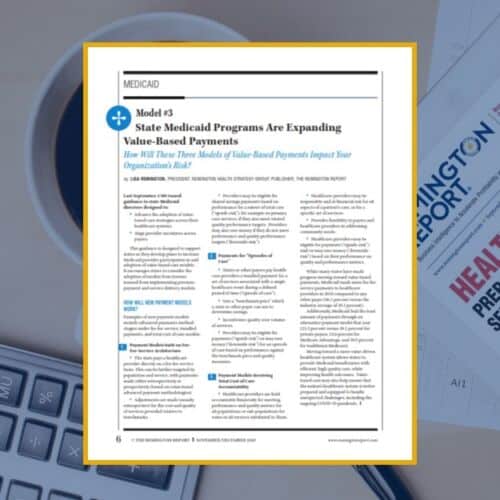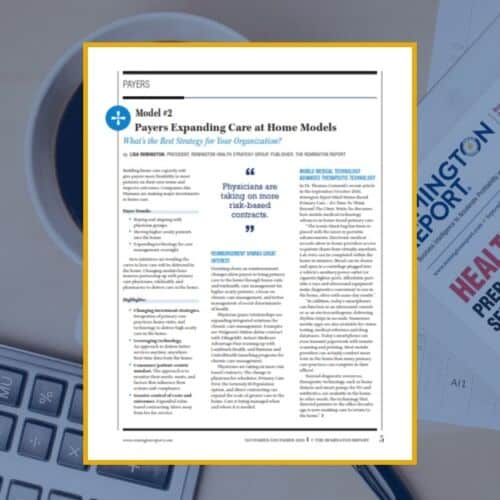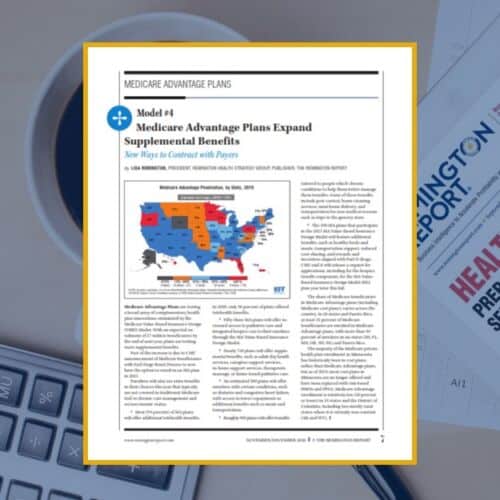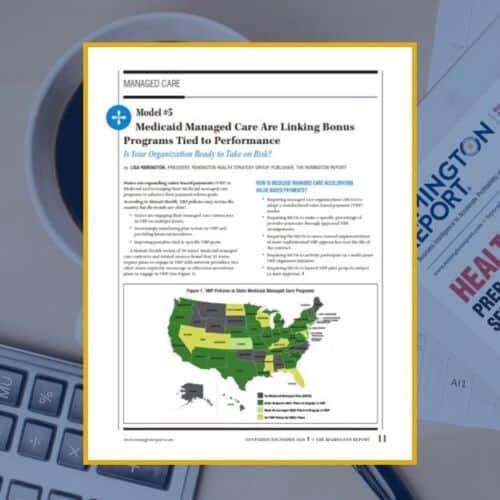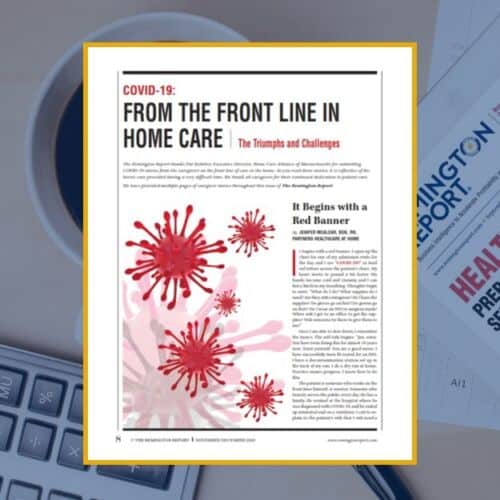-
 The invisible technology boundaries expand the rules of who can offer care in the home, how they will be paid, and it creates a less restrictive policy environment to deliver care at home. The opportunity to reshape care delivery and create a more efficient and cost-effective healthcare system is achievable because of the acceleration and adoption of technology. This article is free to 1-Year Classic and 2-Year Premium subscribers.
The invisible technology boundaries expand the rules of who can offer care in the home, how they will be paid, and it creates a less restrictive policy environment to deliver care at home. The opportunity to reshape care delivery and create a more efficient and cost-effective healthcare system is achievable because of the acceleration and adoption of technology. This article is free to 1-Year Classic and 2-Year Premium subscribers. -
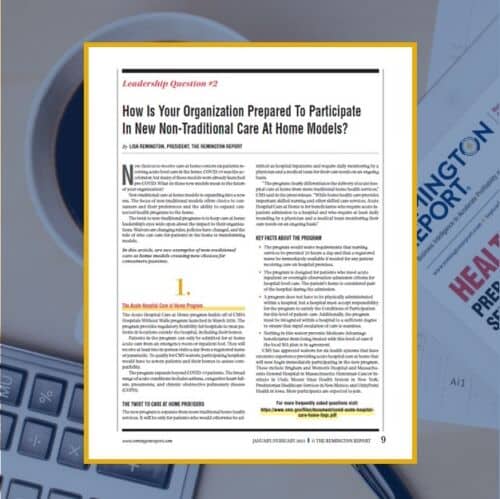 New choices to receive care at home centers on patients receiving acute level care in the home. Non-traditional care at home models is expanding into a new era. The twist to non-traditional programs is to keep care at home leadership?s eyes wide open about the impact to their organizations. Waivers are changing rules, policies have changed, and the role of who can care for patients in the home is transforming models. This article is free to 1-Year Classic and 2-Year Premium subscribers.
New choices to receive care at home centers on patients receiving acute level care in the home. Non-traditional care at home models is expanding into a new era. The twist to non-traditional programs is to keep care at home leadership?s eyes wide open about the impact to their organizations. Waivers are changing rules, policies have changed, and the role of who can care for patients in the home is transforming models. This article is free to 1-Year Classic and 2-Year Premium subscribers. -
 Beginning in 2021, several value-based payment models will begin the shift from fee-for-service to value-based. Earmark this as the transformation of payment reform for care at home providers and how they will be paid in the future. This article is free to 1-Year Classic and 2-Year Premium subscribers.
Beginning in 2021, several value-based payment models will begin the shift from fee-for-service to value-based. Earmark this as the transformation of payment reform for care at home providers and how they will be paid in the future. This article is free to 1-Year Classic and 2-Year Premium subscribers. -
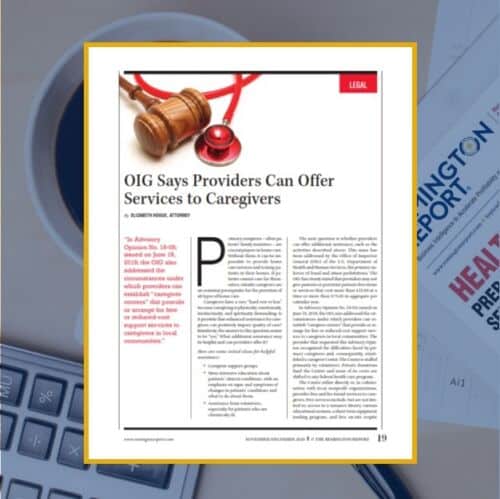 In Advisory Opinion No. 18-05; issued on June 18, 2018; the OIG addressed the circumstances under which providers can establish ?caregiver centers? that provide or arrange for free or reduced-cost support services to caregivers in local communities. This article is free to 1-Year Classic and 2-Year Premium subscribers.
In Advisory Opinion No. 18-05; issued on June 18, 2018; the OIG addressed the circumstances under which providers can establish ?caregiver centers? that provide or arrange for free or reduced-cost support services to caregivers in local communities. This article is free to 1-Year Classic and 2-Year Premium subscribers. -
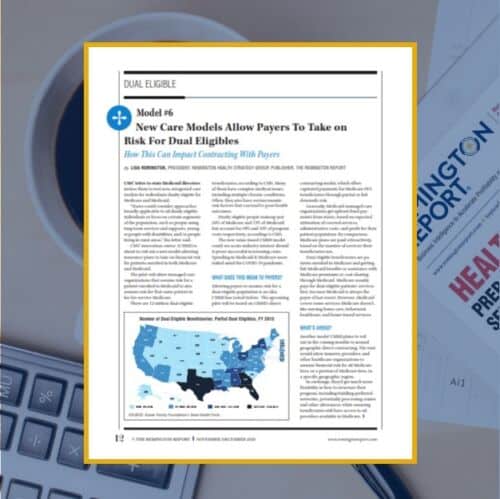 CMS' innovation center (CMMI) is about to roll out a new model allowing insurance plans to take on financial risk for patients enrolled in both Medicare and Medicaid. How will this affect payers? What other new models can you expect in the future? This article is free to 1-Year Classic and 2-Year Premium subscribers.
CMS' innovation center (CMMI) is about to roll out a new model allowing insurance plans to take on financial risk for patients enrolled in both Medicare and Medicaid. How will this affect payers? What other new models can you expect in the future? This article is free to 1-Year Classic and 2-Year Premium subscribers. -
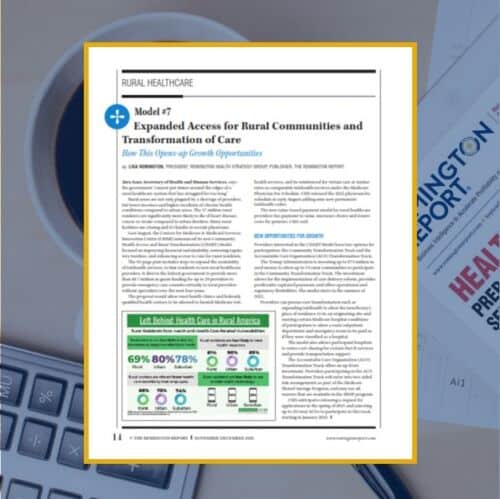 The Community Health Access and Rural Transformation (CHART) Model expands telehealth services, links residents to non-local healthcare providers, and provides more than $8.7 million in grant funding. What are the new opportunities for your organization? This article is free to 1-Year Classic and 2-Year Premium subscribers.
The Community Health Access and Rural Transformation (CHART) Model expands telehealth services, links residents to non-local healthcare providers, and provides more than $8.7 million in grant funding. What are the new opportunities for your organization? This article is free to 1-Year Classic and 2-Year Premium subscribers.
